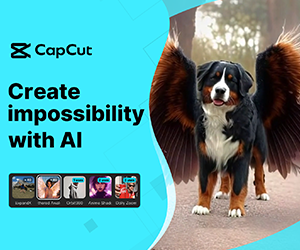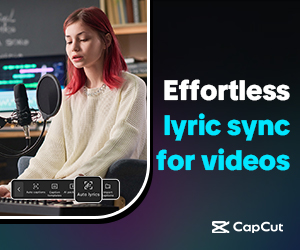In the inexorably digital landscape of the 21st century, the importance of personal branding cannot be overstated. As we navigate the bustling online highways, standing out is tantamount to success. Here are indispensable strategies to carve out your own niche in the digital world.
 Pin
Pin Table of Contents
Understanding Personal Branding
Personal branding is the distinct amalgamation of skills, experiences, and personality that you want the world to see. It is the narrative that weaves through your online presence and sets you apart.
Establish Your Platform
Begin by selecting the right platforms. A polished LinkedIn profile, a dynamic Twitter account, or an engaging Instagram may serve as the cornerstone of your online persona, depending on your industry.
Define Your Brand
Clarity is critical. Know your unique value proposition. What makes you, you? Is it your innovative ideas, your leadership style, or your creative talents? Pin down your brand attributes and ensure they resonate through every post, profile, and tweet.
Create Quality Content
Content reigns supreme in digital personal branding. Whether it’s insightful blog posts, compelling videos, or informative podcasts, creating quality content that adds value is crucial. This helps in building a loyal following and establishes you as an authority in your field.
Consistency and Adaptation
The consistency of your message and aesthetic across various platforms solidifies your brand. Ensure that your visual identity and voice remain uniform, whether you’re responding to comments or sharing content.
Create a content calendar to plan and stay consistent. Adapt your strategy based on feedback and performance metrics. Engage with your audience, seeking their thoughts to refine your approach continually.
Engage and Understand with Your Audience
Interaction is the currency of the digital world. Engage with your community by responding to comments, participating in discussions, and networking with peers. This builds relationships and boosts your presence.
Before diving into content creation, define who your audience is and what they seek. What are their pain points, interests, or areas where they desire growth? Tailor your topics to address these elements.
Amplification through Collaboration
Leverage more exposure through other channels:
- Interviews and PR: Introduce yourself to new audiences by featuring in podcasts or videos of influencers in your niche.
- Guest Blogging: Write for established blogs to boost credibility and backlinks.
- Public Speaking: Establish thought leadership by delivering talks at industry events.
- Brand Partnerships: Join forces with complementary brands or individuals for co-marketing efforts that benefit both parties.
Content Typology
Decide how these topics will unfold across different content formats:
- Blogs: Here, you can elaborate on topics with a tone that reflects your brand voice.
- YouTube: Create engaging video content that caters to those who prefer visual and auditory learning.
- Social Media: Share quick tips, infographics, and short stories for engagement and broader reach.
- Podcasts: Connect with listeners through more personal, in-depth discussions.
- Emails: Develop a direct line of communication with your audience, providing exclusive insights or summaries of your latest work.
Content Distribution
Once you know what you’ll create, decide where it goes. Your platforms require strategic selection:
- Blogs should be housed on your website, reinforced by SEO practices.
- YouTube content needs attention-grabbing thumbnails and SEO-friendly descriptions.
- Social Media channels differ in audience and content norms; tailor your content accordingly.
- Podcasts can be distributed across major platforms, like Spotify or Apple Podcasts.
- Emails must provide value to keep readers subscribed; segment your list for personalized communication.
Learn SEO Basics
Understanding the rudiments of Search Engine Optimization (SEO) can amplify your visibility. Incorporate relevant keywords in your content, optimize your profiles for search engines, and use descriptive, keyword-rich titles to your advantage.
Monitor Your Online Presence
Keep a close eye on your digital footprint. Use tools like Google Alerts to monitor mentions of your name or brand. This helps in managing your reputation and ensuring your personal brand reflects who you are.
Leverage Multimedia
Humans are visual creatures. Integrate a mix of media – images, infographics, videos – to capture attention and convey your message more effectively.
Invest In Continuous Learning
The digital world is ever-changing, and keeping abreast of new trends and tools is vital. Continual learning and adaptation are necessary to keep your personal brand relevant.
Measure and Pivot
Utilize analytics to measure the impact of your personal branding efforts. Examine your engagement rates, follower growth, and content performance to understand what resonates with your audience.
Assemble these elements with coherence and commitment, staying true to your brand’s voice, and you’ll be on the path to forging a successful personal brand recognized for its valuable content bounty.
The Takeaway
To stand out in a digital age, you must be strategic, consistent, and engaged. Personal branding is an ongoing journey that requires patience and persistence. As the digital landscape evolves, so too should your approach to personal branding. Embrace innovation, be authentic, and watch as opportunities unfold in the glow of your well-crafted digital spotlight.
Examples of Personal Branding
Personal branding is about crafting and showcasing one’s unique identity and value proposition in a consistent manner across various platforms and interactions. Here are some detailed examples across different fields:
1. Entrepreneur:
- Brand Statement: “Empowering businesses to grow digitally with innovative marketing strategies.”
- Tactics: Social Media – Regularly posts insightful content on LinkedIn about digital marketing trends, which enhances credibility. Blogging – Writes in-depth articles on personal website about leveraging digital tools for business growth. Public Speaking – Holds webinars and speaks at conferences, establishing thought leadership.
- Outcome: Sought after for consultations and partnerships in digital marketing.
2. Graphic Designer:
- Brand Statement: “Design that tells a story and brings visions to life with creativity and precision.”
- Tactics: Portfolio – Maintains an online portfolio with a distinctive aesthetic and showcases a variety of work. Instagram – Uses a professional account to share design projects, behind-the-scenes, and client testimonials. Networking – Joins design forums and attends meetups to connect with potential clients.
- Outcome: Recognizable style leads to consistent freelance opportunities.
3. Fitness Trainer:
- Brand Statement: “Transforming lives through customized fitness programs and relentless motivation.”
- Tactics: YouTube – Posts fitness tutorials and motivational stories of client transformations. Instagram Live – Hosts Q&A sessions and shares workout tips, building a community of followers. Partnerships – Collaborates with health brands and promotes products that align with personal values.
- Outcome: Becomes an influencer in the fitness field with a strong following and brand partnerships.
4. Author:
- Brand Statement: “Crafting thrilling narratives that capture the heart and imagination of readers worldwide.”
- Tactics: Book Signings – Attends events and engages with readers personally, which helps build a loyal readership. Social Media – Uses Twitter to share writing tips, engage in conversations about literature, and update followers on upcoming books. Blog Tours – Collaborates with bloggers for interviews and guest posts, further expanding reach.
- Outcome: Develops a distinctive voice and dedicated fan base, aiding in the success of new book launches.
5. Corporate Executive:
- Brand Statement: “Leading with integrity, fostering teamwork, and driving innovation in the tech industry.”
- Tactics: LinkedIn Articles – Writes about leadership and management, sharing personal experiences and industry insights. Mentorship – Offers guidance to young professionals, which emphasizes leadership qualities. Conference Panels – Participates in discussions on technology and leadership, broadening influence.
- Outcome: Establishes a reputation as a thought leader and becomes a go-to source for industry insights.
6. Chef:
- Brand Statement: “Blending tradition with a twist to deliver unforgettable culinary experiences.”
- Tactics: Cooking Shows – Appears on TV or online cooking channels to demonstrate skills and share signature recipes. Instagram Stories – Showcases the creative process, dishes, and daily life in the kitchen, adding a personal touch. Pop-up Events – Hosts unique dining experiences to directly engage with food enthusiasts.
- Outcome: Builds a reputation for unique culinary creations, leading to book deals and restaurant collaborations.
In each of these examples, the individuals leverage their unique talents and channels to communicate their personal brand, connect with their audience, and establish a presence in their respective fields.
FAQs: Personal Branding: Mastering the Digital Spotlight
Personal branding is the process of establishing a public persona for an individual or organization. It involves highlighting unique characteristics, skills, and experiences, and effectively communicating them through various digital platforms to influence how you are perceived by others.
In the digital age, your online presence is often the first impression you make. A strong personal brand can differentiate you from competitors, build trust with your audience, and create opportunities for networking, career advancement, and business growth.
Important platforms include LinkedIn for professional networking, Twitter for thought leadership and news, Instagram for visual storytelling, and personal blogs or websites for in-depth content. The choice depends on where your target audience spends their time.
Consistency is vital. The frequency can vary from daily tweets to weekly blog posts, depending on your audience and platform. It’s crucial to maintain a regular schedule without compromising content quality.
Absolutely. Personal branding can showcase your expertise, making you more attractive to potential employers. It can demonstrate your passion, work ethic, and soft skills that might not come across in a resume.
Measure success through engagement rates, follower growth, website traffic, and professional opportunities (like job offers or speaking engagements) that arise. Tools like Google Analytics for websites or platform-specific insights can provide valuable data.
Inconsistency in messaging or overpromising and underdelivering can weaken your brand. Always be authentic; a genuine personal brand resonates more strongly than an artificial persona.
Approach negative feedback constructively. Respond professionally and thoughtfully when appropriate, and use criticism as a learning opportunity to improve your brand.
This depends on your industry and comfort level. Some blend the two for a holistic brand. Others maintain separation to present a focused professional image. Reflect on your goals and audience to decide.
Building a personal brand is an ongoing process. Initial development can take months to gain momentum, but establishing a robust brand is an ongoing effort that requires regular attention and adaptation.
































